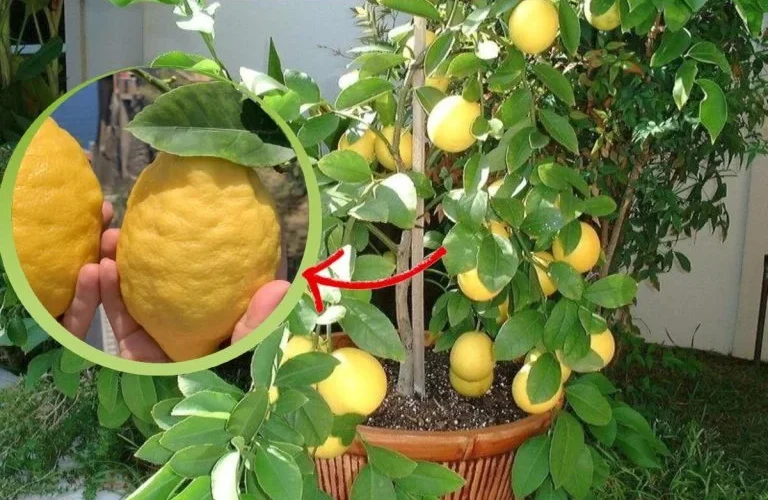They catch your eye at the fruit stand, those giant lemons, oversized and carrying the fragrance of the Coast. They tempt you with their rough and thick skin, promising refreshing drinks, intoxicating aromas in recipes, and are simply irresistible!
But they aren’t out of reach at all! In fact, they’re much closer than you think, close enough that you could cultivate them on your terrace or balcony to enjoy genuinely homegrown fruit.
So, are you convinced? Rush to the nursery, but not before reading, in one breath, the tips and tricks from the green thumbs that we, at Donna Up, have gathered for you!
The basic rule to start with is the selection of the right seedling. When you visit the nursery, pay less attention to the existing fruits and focus on the number of buds; they will be the ones to gift you lemons the next year.
Giant Lemons on Your Balcony, Unbelievable: Just a Spritz of This Ingredient, the Green Thumb’s Secret.
Giant Lemons on Your Balcony: The Green Thumbs’ Secret
Next, purchase a plastic or terracotta pot, ensuring it has drainage holes to prevent waterlogging. Choose one with a diameter and height of at least 35 centimeters.
Regarding the soil, get a mixture slightly acidic (pH between 6 and 6.5), composed of:
- Coconut fiber, 2 parts
- Universal soil, 2 parts
- Compost, 1 part
- Bone meal mixture, 1 part
- Perlite, ½ part
Once home, find a well-lit and sunny spot on your balcony, terrace, or garden. It should receive sunlight for at least 6 hours a day. Place your lemon tree there, but not immediately; for a week, keep it in the shade to acclimate.
When it comes to watering, it should be consistent in summer to keep the soil always moist. Check by touching the soil, add water when needed, and let it absorb completely before adding more to avoid root rot.
Monthly, add iron magnesium and manganese-based fertilizer or homemade compost with eggshells and coffee grounds. To provide the right dose of potassium, bury a banana peel every fifteen days.
Treat the plant with neem oil dissolved in water, a tablespoon every two weeks will suffice to protect it from pests. Create the mixture, transfer it to a sprayer, and then spray it on the leaves. Avoid overly aggressive insecticides that compromise biodiversity and deter pollinator insects.
Lastly, regularly trim diseased and irregular branches, but reserve the actual pruning for the spring when the plant is ready for new growth.
